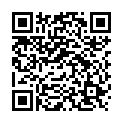|
|
|
| Module code: E607 |
|
3V+2U (5 hours per week) |
|
5 |
| Semester: 6 |
| Mandatory course: yes |
Language of instruction:
German |
Assessment:
Written examination
[updated 12.03.2010]
|
E607 Electrical Engineering, Bachelor, ASPO 01.10.2005
, semester 6, mandatory course
|
75 class hours (= 56.25 clock hours) over a 15-week period.
The total student study time is 150 hours (equivalent to 5 ECTS credits).
There are therefore 93.75 hours available for class preparation and follow-up work and exam preparation.
|
Recommended prerequisites (modules):
E405 Electrical Machines I
E511 Electrical Machines II
[updated 12.03.2010]
|
Recommended as prerequisite for:
|
Module coordinator:
Prof. Dr.-Ing. Vlado Ostovic |
Lecturer:
Prof. Dr.-Ing. Vlado Ostovic
[updated 12.03.2010]
|
Learning outcomes:
After successfully completing this course, students will be able to analyse an electrical machine as a drive unit or a component in a power supply network and use the parameters from the machine’s equivalent network model to calculate its operating characteristics. Students will learn how machine types differ in their morphologies and how this affects the behaviour of a machine in its steady state. They will also be able to make the transition from the general torque equation derived from the magnetic energy stored in the air-gap to the speed-torque curves or load-angle characteristics of conventional machines.
After completing this course, students will be equipped with the requisite analytical tools and will be able to handle more complex topics in the field of electrical machines and drives that arise in their subsequent careers or education.
[updated 12.03.2010]
|
Module content:
1.Equivalent network models of electrical machines
1.1 Magnetizing inductance and leakage inductance
1.2 Magnetizing inductance of a coil and winding in a slotless cylindrical
unsaturated machine
1.3 Magnetizing inductance of a coil and winding in a slotless cylindrical
saturated machine
1.4 Mutual inductance of a coil and winding in an unsaturated machine with
variable air-gap geometry
1.5 Mutual inductance between the windings in a slotless unsaturated machine
1.6 Effect of slotting on magnetizing and mutual inductance on both sides of
the air-gap
1.7 Equivalent network models
1.8 Induced voltage in the windings of electrical machines
2.Force and torque in electrical machines
2.1 The role of magnetic energy in electromagnetic energy conversion
2.2 The force acting on conductors in the slots of electrical machines
2.3 The torque generated by winding currents and the torque function
2.4 Electromagnetic torque as a function of air-gap parameters
[updated 12.03.2010]
|
Teaching methods/Media:
Lecture notes, overhead transparencies, video projector
[updated 12.03.2010]
|
Recommended or required reading:
OSTOVIC, V: Elektrische Maschinen [Electric Machines], lecture notes
ECKHARDT, H: Grundzüge der elektrischen Maschinen, Teubner
RICHTER, R: Elektrische maschinen 1, Birkhäuser Verlag
[updated 12.03.2010]
|


